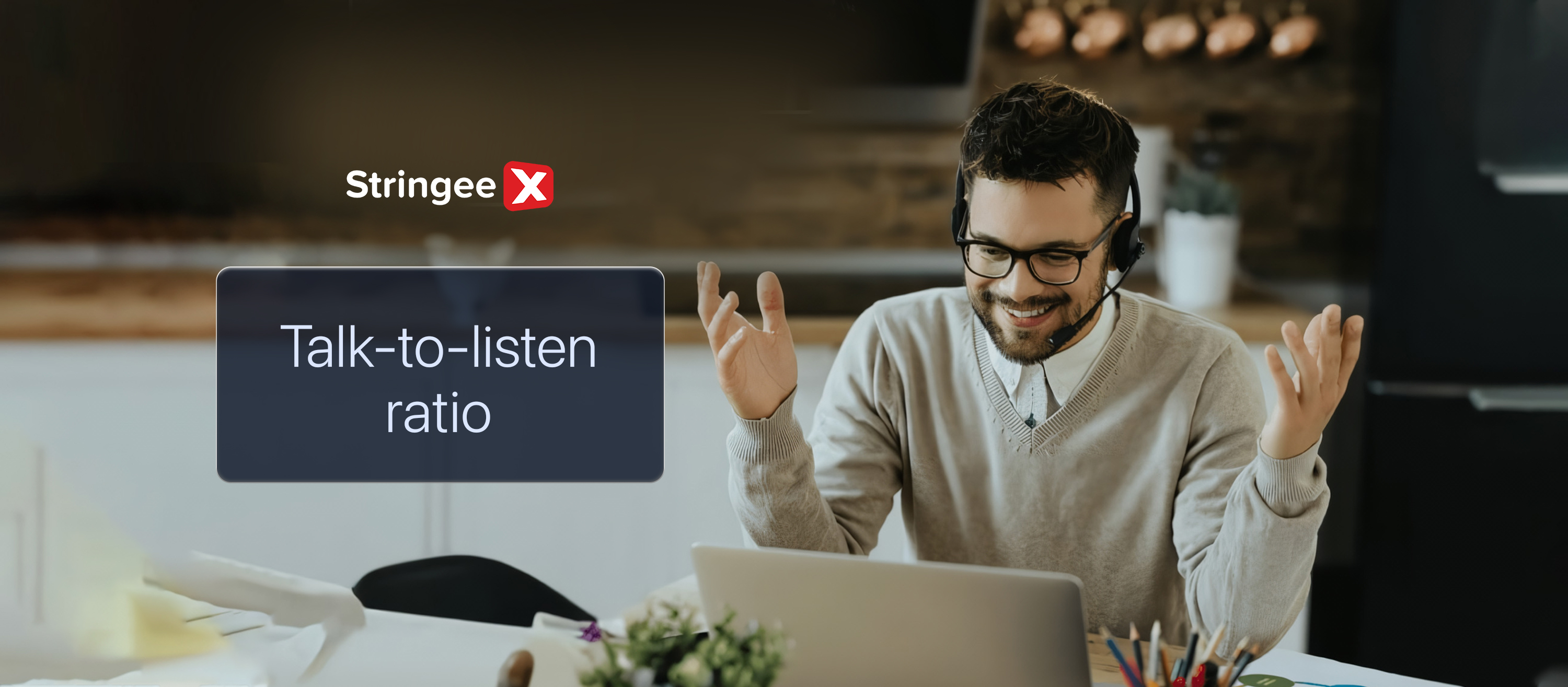Introduction
Getting your talk-to-listen ratio right can make a big difference in your conversations. It helps you connect better with your customers, understand their needs, and build stronger relationships. Let's dive into how you can master it and see some real benefits.
What Is A Talk-To-Listen Ratio?
The talk-to-listen ratio is basically a way to measure how much of a conversation is spent talking versus listening. When you're on a call, this ratio tells you how much of that time you're talking compared to how much the other person is talking. If you're talking for 70% of the time and listening for 30%, your talk-to-listen ratio is 70:30.
In sales and customer service, the ideal ratio is more balanced. In a survey analysing over 25,000 sales calls, the sweet spot is around 43% talking and 57% listening. The 43:57 ratio means that in a good conversation, the customer should be speaking for more than half of the time.
An ideal talk-to-listen ratio is 43:57 - Source: Pexels
6 Benefits Of An Ideal Talk-To-Listen Ratio
Increase Your Revenue
When you let customers do most of the talking, they feel heard, which may help build trust. This trust makes it easier to close deals because they feel like you understand their needs.
Shorten Handling Time
By listening to what your customers are saying, you can quickly figure out the issue. It means you can solve their problem faster, saving you and your customers time.
Give Smarter Feedback
When you know exactly how conversations are going, you can give your team better advice on what they're doing well and what could be improved. Your team will handle customer's problems easier and make them more satisfied.
Build Stronger Connections
Customers who feel satisfied may stick around and care more about your brand. Listening more helps you build a personal connection, which leads to long-term relationships. Your customers will come back and even recommend you to others.
Learn More About Your Customers
The more your customers talk, the more you learn about their needs. You will make better decisions about the ways to serve them, which can improve your overall business.
Make Fewer Mistakes
When you listen closely, you won't miss important information or make mistakes. Your interactions with customers will go more smoothly, and they'll be more satisfied with the service they receive.
Stand Out From The Crowd
Many sales and support people talk too much and don't listen enough. By being the one who actually listens, you make a strong impression. Customers will remember you because you make them feel heard and respected, which is rare.
Here's where omnichannel solutions like StringeeX come in, providing a personalised experience for the customers.
10 Tips To Master A Talk-To-Listen Ratio
Ask More Questions
When you ask good questions, you're letting your customers drive the conversation while you guide them subtly toward what you want to discuss. It's a great way to keep calls focused on their needs.
Instead of asking questions with simple yes-no answers, you should go for open-ended ones. These questions will encourage customers to share more details and discuss what they're looking for or what problems they need to solve.
Asking the right questions will help you discover more needs the customers may not have mentioned. When you know what they're looking for, you can suggest additional products or services that might be helpful to them.
Engage In Active Listening
Engaging in active listening is tuning in to what the other person is saying. You must fully engage in the conversation, not just wait for your turn to talk. When you're on a call with a customer, instead of just hearing words, you're finding out customers' needs. This process includes 5 stages:
- Receiving: First, listen and focus on what you're saying without interrupting.
- Understand: Next, find out the message they're trying to express.
- Evaluating: Next, decide how to respond in a way that shows you're on the same page.
- Remembering: You need to remember important details your customers provide. It's not just for now but later, too.
- Responding: When it's your turn to talk, show you've listened carefully by repeating what they said or asking more questions to understand them better.
Engaging in active listening is a good strategy - Source: Pexels
Avoid Making Assumptions
When agents rush and control the conversation, they often guess what the customers want or need. This can lead to misunderstandings and missed opportunities. Instead, it's better to let the customer talk more. When they do, you'll get the real assumptions, and you will address their actual concerns.
Avoid Interrupting And Be Patient
Interrupting your customers may mess up conversations, which can make them unsatisfied. When you interrupt, they might forget to share important details. It can also make them feel like you're not really listening to what they're saying.
To keep the conversation smooth and respectful, just let them finish what they're saying before you jump in.
Let Silences Sit
Letting silences sit is giving your customers time to think without feeling rushed. Don't rush to fill the conversation with words when there's a pause. Sometimes, your customers need time to think about what they've said. Allowing these pauses gives your clients space to express their needs and make the conversation more effective fully.
Pause Before Responding
Taking a moment before responding to your customers is a good point. This brief pause lets you gather your thoughts and choose the best reply. It also allows your prospect to add more if they're still thinking. Thus, you can fully grasp the customer's message. This will build stronger, more trusting relationships between your brand and clients.
Use Emphasis Effectively
Using emphasis in your tone helps you highlight the important parts of your message. Stressing key points will grab your customer's attention and ensure they understand your products' strengths. It keeps the conversation engaging and increases the chance of closing deals. However, don't overdo it, as your customer may turn away.
Role Play For Practice
Role play is a great way to improve how your team handles conversations. Regular practice sessions help team members get familiar and comfortable when managing talk time and interacting effectively. They can go through various scenarios and practise their responses during these sessions.
Apply Emotional Labelling
When you're talking to someone, and they show emotion, you can use "emotional labelling" to connect with them better. After you ask a good question and hear their response, notice how they feel.
Point that out using phrases like "It seems like you're feeling …" "It looks like you're…" "It sounds like you're…" They'll feel understood when you point out their emotion and may open up even more.
You should listen closely and pause for a few seconds after naming the emotion. Your customers may share more if they want to.
Practice Empathy
Put yourself in the customer's shoes. Understanding their perspective and needs will help you respond more thoughtfully and maintain a balanced conversation.
Also, speak clearly and at a moderate pace. Your tone should be friendly and professional. You should practise empathy to make it easier for the customer to engage and respond comfortably.
Patience and empathy make your customer comfortable - Source: Pexels
Conclusion
Getting an ideal talk-to-listen ratio is more important for communication in sales and support. You should listen more and talk less. It will help you better understand your customers' needs, avoid misunderstandings, and build stronger relationships. If you still have other questions, StringeeX is here to help!










